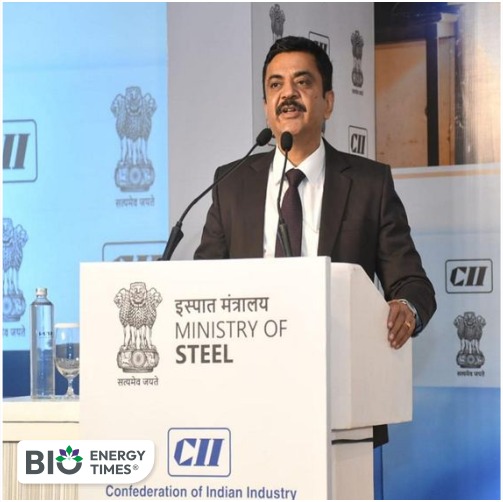With hydrogen prices falling faster than expected, India could soon see the fuel emerge as a viable alternative to natural gas, potentially reshaping the steel industry’s decarbonisation strategy over the next five to ten years, said Union Steel Secretary Sandeep Poundrik.
Speaking at the CII Steel Summit 2025, Poundrik emphasized the steel sector’s central role in India’s sustainability agenda, highlighting the “DRI plus Hydrogen” route as a promising pathway for green steel production.
He also pointed to significant investment opportunities driven by expanding sectors such as defence, space, automotive, and power, which are boosting demand for high-grade steel products. Addressing a common misconception, Poundrik noted that India’s steel industry is not dominated solely by large producers; nearly 47% of steel comes from around 2,200 medium and small enterprises, forming the backbone of a resilient and distributed steel ecosystem.
“There is a strong need for India to achieve self-reliance in the steel sector, given its strategic significance,” Poundrik said. He outlined ongoing efforts with the Ministry of Coal to increase domestic coking coal usage and measures to prevent cheap or substandard steel from entering the market. Through Quality Control Orders (QCOs), the government aims to maintain a level playing field for domestic and foreign producers.
Poundrik added that consistent consumption growth, capacity expansion, and emerging opportunities in specialty and green steel are steering India toward a 500 million tonne target by 2047. “At the current pace, we are adding roughly 100 million tonnes every five to seven years, positioning India to meet domestic demand and emerge as a global leader in sustainable steel production,” he said.
Industry leaders echoed the call for strategic growth. Koushik Chatterjee, Co-Chairman of the CII National Committee on Steel and Executive Director, Tata Steel Ltd, said steel forms the backbone of India’s industrial transformation and resilience, enabling construction, transport, energy, and manufacturing. He noted that under the National Steel Policy, India aims for 300 million tonnes of capacity by 2030-31 and 500 million tonnes by 2047.
Jayant Acharya, Co-Chairman of the CII National Committee on Steel and Joint MD & CEO of JSW Steel Ltd, highlighted India’s demographic advantage, structural reforms like GST 2.0, and rising urbanization as drivers of steel demand. He outlined three pillars for future growth—strategic investment, self-reliance, and sustainability—linking the sector closely to GDP growth, regional development, and community upliftment.
The summit convened policymakers, industry leaders, and experts to discuss India’s steel sector roadmap, focusing on capacity expansion, green steel initiatives, innovation, and the sector’s critical role in nation-building.














